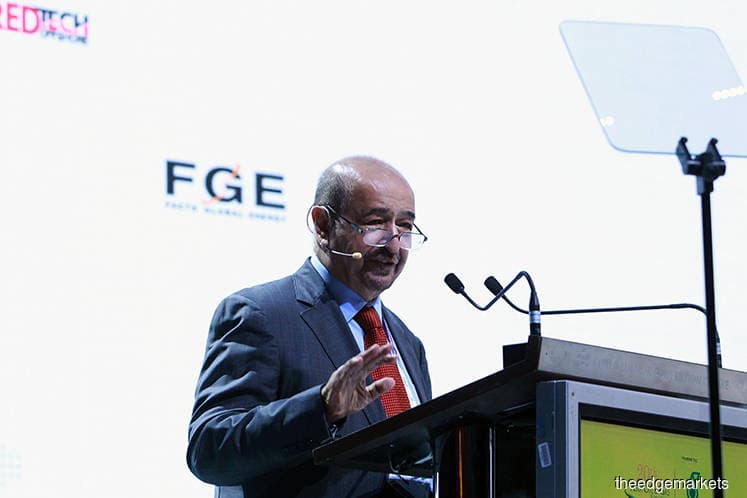
This article first appeared in The Edge Financial Daily on June 26, 2019
KUALA LUMPUR: The global liquefied natural gas (LNG) market cycle “is alive and well”, with a temporary market tightening expected in two years’ time between periods of surplus, said an energy expert.
Fereudin Fesharaki, the chairman of energy consultancy firm Facts Global Energy, is projecting a seller’s market in 2021-2025 as there are no new LNG projects coming in for several years after 2020, according to current project flows.
Prior to that, a preceding glut would see as much as 40 million tonnes per annum (tpa) of new capacity to enter the market by end-2020.
“These are all [coming in from] delayed US and Australian projects.
“There is a traffic jam with no policeman [in the LNG market in the short term] ... Demand is still pretty solid, but not [by another] 40 million tpa,” Fesharaki said at the Asia Oil and Gas Conference 2019 yesterday.
That surplus volume should dissipate in the 2021-2025 period in absence of new volume as aforementioned, and continuously solid demand for the natural gas.
“Between mid-2021 and 2025, we will see a balance-to-tight spot [LNG] market with spot prices going above contract prices. The buyer’s market will change to a seller’s market very quickly,” he said.
In that period, Fesharaki expects sellers to again seek long-term contracts, ahead of another cycle of surplus that could last for at least the following three to five years. “We expect about 200 million tpa of FID (final investment decision) in 2018-2023, and this volume will come into the market in 2025-2027,” he said.
He said the global market [demand] is [expected to reach] 350 million tpa [this year].
“Maybe it will [rise to] 450 million tpa [in 2025] ... but the [supply] volume that is coming in is huge.
“It will take three to five years to be organically absorbed [even] if the demand is moving upward,” he said, citing slowing demand growth projection by International Energy Agency (IEA) on natural gas,” he said.
Earlier this month, the IEA in its annual natural gas report said that demand growth for natural gas grew by a healthy 4.8% in 2018, but is expected to average at a sombre 1.6% between 2019 and 2024.
In recent years, companies have been cautious when sanctioning LNG projects amid pressure on prices and concerns about oversupply due to rapid advancements in shale gas production. An example closest to home is the Canadian shale venture by Petronas, which achieved FID six years after fully acquiring Progress Energy Canada Ltd in 2012.